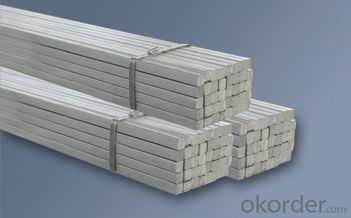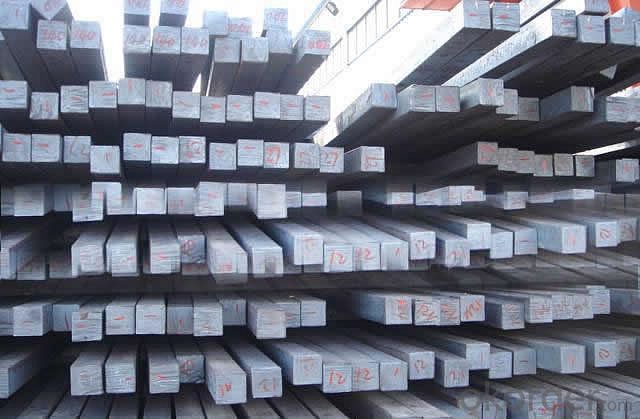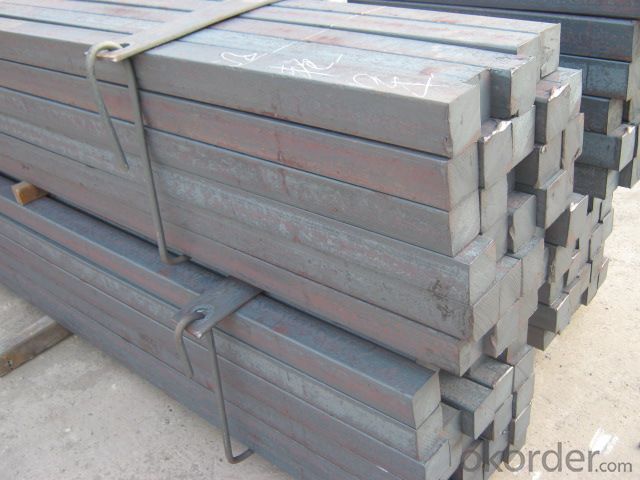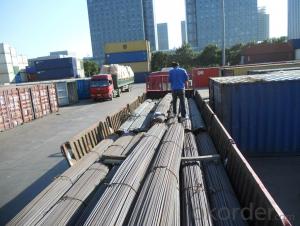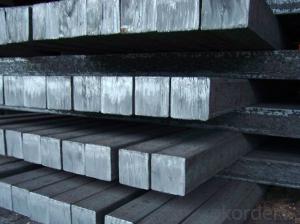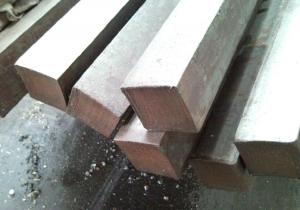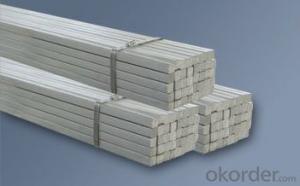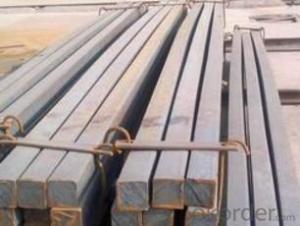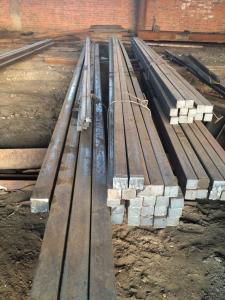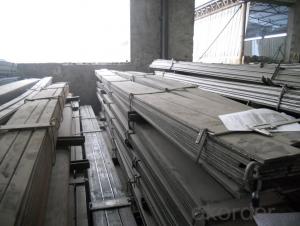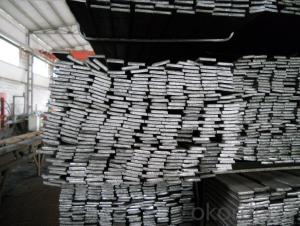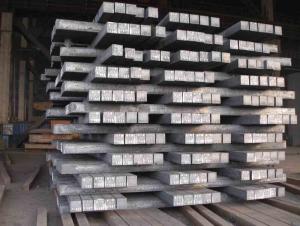Q275B Square bar hot quality for construction
- Loading Port:
- Tianjin
- Payment Terms:
- TT or LC
- Min Order Qty:
- 10000 m.t.
- Supply Capability:
- 10000 m.t./month
OKorder Service Pledge
OKorder Financial Service
You Might Also Like
Product Description:
OKorder is offering Q275B Square bar hot quality for construction at great prices with worldwide shipping. Our supplier is a world-class manufacturer of steel, with our products utilized the world over. OKorder annually supplies products to European, North American and Asian markets. We provide quotations within 24 hours of receiving an inquiry and guarantee competitive prices.
Product Applications:
Q275B Square bar hot quality for construction are ideal for structural applications and are widely used in the construction of buildings and bridges, and the manufacturing, petrochemical, and transportation industries.
Product Advantages:
OKorder's Q275B Square bar hot quality for construction are durable, strong, and resist corrosion.
Main Product Features:
-Standard: GB,
-Grade: Q195 or equivalent.
-Chemical Composition:
Standard | Grade | Element (%) | ||||
GB | Q195 | C | Mn | S | P | Si |
0.06~0.12 | 0.25~0.50 | ≤0.050 | ≤0.045 | ≤0.30 | ||
Measures of HR Square Bar (small measures):
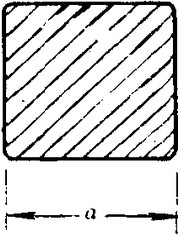
(Section of HR Square Bar)
-Length of a side and Theoretical weight of Square Bar.
Length of a side(mm) | Theoretical weight(kg/m) | Length of a side(mm) | Theoretical weight(kg/m) |
7 | 0.385 | 22 | 3.80 |
8 | 0.502 | 24 | 4.52 |
9 | 0.636 | 25 | 4.91 |
10 | 0.785 | 26 | 5.30 |
11 | 0.950 | 28 | 6.15 |
12 | 1.13 | 30 | 7.06 |
13 | 1.33 | 32 | 8.04 |
14 | 1.54 | 34 | 9.07 |
15 | 1.77 | 36 | 10.17 |
16 | 2.01 | 38 | 11.24 |
17 | 2.27 | 40 | 12.56 |
18 | 2.54 | 42 | 13.85 |
19 | 2.82 | 45 | 15.90 |
20 | 3.14 | 48 | 18.09 |
21 | 3.46 | 50 | 19.63 |
Notes:
1, The theoretical weights in the list, base on the density of 7.85 g/cm3.
2, Formula for theoretical weight of Square bar: (length of a side)2 * 0.00785
3, The numbers with *mean that they are not regular or we don’t offer them.
-Regular length of Square Bar:
Steel | Length of a side (mm) | Length of steel (m) |
Normal steel | < 25 | 4~10 |
> 25 | 3~9 | |
Steel of high quality | All measure | 2~6 |
Tool steel >75 | 1~6 |
Usage/Applications of HR Square Bar:
-The Square Bar is normally used as structure steel.
-Row material for other structure steel like steel angles, channels, I-beams, H-beams, etc…
Packaging & Delivery of HR Square Bar:
-Packing Detail: The products can be packed in bundles by steel wires.
-Marks: We make tag marks and color marks. The tag marks with white background and red company logo will be tied up to each bundle of the products. The information is usually including basic information of products and company and other information requested by customers. As for color marks, we will paint both ends of bundles to make sure that it will be more convenient for customers to distinguish them from other products.
-Delivery Detail: 30~45 working days after receive buyer’s T.T. or L/C.
Transportation:
-The products can be delivered by bulk vessel or by container. As for container, products with the length of 6m will be loaded in 20’ container, with 9m or 12m, in 40’ container.
-The maximum quantity of loading of container is 25 tons.
-The products are usually transported to the nearest port from the production place.
FAQ:
Q1: How soon can we receive the product after purchase?
A1: Within three days of placing an order, we will begin production. The specific shipping date is dependent upon international and government factors, but is typically 7 to 10 workdays.
Q2: Can stainless steel rust?
A2: Stainless does not "rust" as you think of regular steel rusting with a red oxide on the surface that flakes off. If you see red rust it is probably due to some iron particles that have contaminated the surface of the stainless steel and it is these iron particles that are rusting. Look at the source of the rusting and see if you can remove it from the surface.
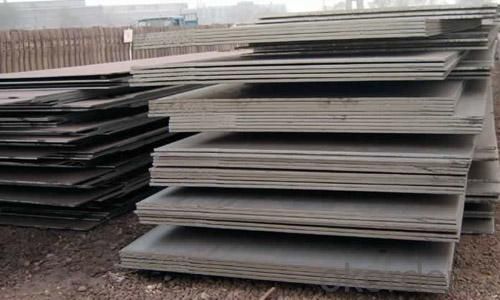
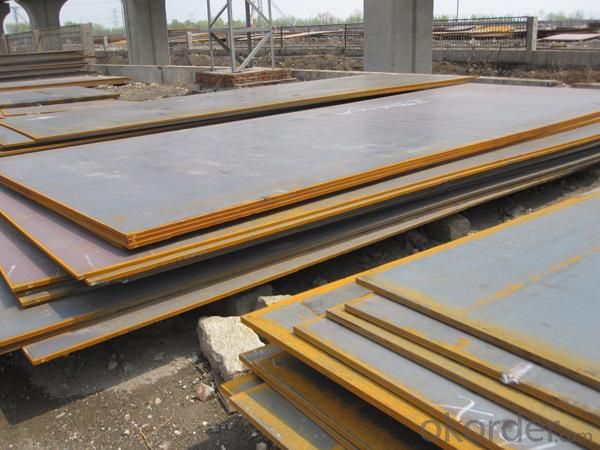
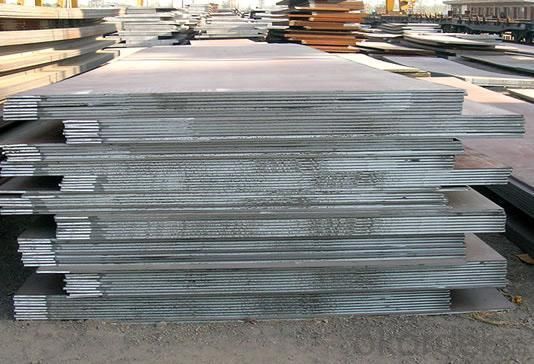
- Q: Can a steel square be used for checking the levelness of a countertop?
- No, a steel square cannot be used for checking the levelness of a countertop.
- Q: How does a steel square assist in determining the correct miter angle?
- A steel square assists in determining the correct miter angle by providing a precise tool for measuring and marking angles on wood or other materials. It consists of a long metal blade with a ruler-like scale and a shorter perpendicular blade, forming a right angle. To determine the correct miter angle, you can use the steel square in several ways. One method is by placing the longer blade along the edge of the material you want to cut, and then aligning the shorter blade with the desired angle. The scale on the blade allows you to accurately measure the angle and make adjustments as needed. Once the angle is set, you can mark the material accordingly for cutting. Another way to use a steel square for miter angle determination is by creating a reference line. By aligning the longer blade with one edge of the material and the shorter blade with another edge, you can establish a reference line at the intersection of the two blades. This reference line can then be used to guide the cutting process and ensure the correct miter angle. Overall, a steel square is a versatile tool that allows for precise measurement and marking of angles, making it an essential aid in determining the correct miter angle. Its accuracy and ease of use make it indispensable for carpenters, woodworkers, and anyone else working with angles in construction or DIY projects.
- Q: Can a steel square be used for checking the squareness of a scroll saw blade?
- No, a steel square cannot be used for checking the squareness of a scroll saw blade. While a steel square is a useful tool for checking the squareness of various woodworking joints and cuts, it is not specifically designed or suitable for assessing the squareness of a scroll saw blade. Scroll saw blades are thin, delicate, and typically made of hardened steel. They have a unique shape and design that differs from the straight edge of a steel square. The blade of a scroll saw is typically curved, allowing for intricate and precise cuts. To check the squareness of a scroll saw blade, it is recommended to use a specialized tool such as a scroll saw blade square or a scroll saw blade alignment jig. These tools are specifically designed for this purpose and provide the appropriate angles and measurements to ensure the blade is aligned correctly. Using a steel square, which is designed for straight edges, may not provide accurate results and could potentially damage or bend the delicate scroll saw blade. It is always best to use the appropriate tools for specific tasks to ensure accurate and safe results.
- Q: Can a steel square be used for drawing straight lines?
- Yes, a steel square can be used for drawing straight lines. The straight edges of the square can be aligned with the desired line, providing a straight and accurate guide for drawing.
- Q: How do you use a steel square to find the length of a stair riser?
- To use a steel square to find the length of a stair riser, you would place the square against the vertical riser and the horizontal tread. By aligning the square's 90-degree angle against the riser and tread, you can measure the length of the riser directly on the square's blade. This allows for accurate and precise measurements for the length of the stair riser.
- Q: How does a steel square assist in determining the correct angle for a half-blind dovetail joint?
- A steel square assists in determining the correct angle for a half-blind dovetail joint by providing a precise and accurate measurement tool. It allows woodworkers to align the square with the edges of the wood to ensure that the angle of the joint is exactly 90 degrees. This helps in achieving a clean and tight fit for the half-blind dovetail joint, ensuring a strong and sturdy connection between the pieces of wood.
- Q: How do you use a steel square for making precise 45-degree angle cuts?
- To use a steel square for making precise 45-degree angle cuts, first, align one side of the square with the edge of the material you want to cut. Then, rotate the square until the 45-degree angle mark lines up with the edge of the material. Finally, use a pencil or a marking tool to trace along the edge of the square, ensuring a precise 45-degree angle cut.
- Q: What are some common measurements that can be taken with a steel square?
- In carpentry and woodworking, a steel square is an indispensable and adaptable tool. It comprises a lengthy blade and a shorter tongue, which together form a perfect 90-degree angle. The following are several common applications of a steel square: 1. Ensuring right angles: The paramount purpose of a steel square is to guarantee the precision of right angles. It can be employed to verify if two surfaces are perfectly perpendicular to each other, such as when constructing frames, cabinets, or bookshelves. 2. Establishing square lumber: When dealing with rough lumber, a steel square can be used to designate and cut it into precise right angles. By aligning the blade against one edge and the tongue against another, the square can provide a guiding template for making accurate cuts. 3. Assessing plumb: A steel square aids in determining whether an object is perfectly vertical or plumb. By placing the square against a surface and examining for gaps between the blade and the object, one can ensure proper alignment. 4. Measuring angles: While primarily utilized for right angles, a steel square can also measure other angles. By aligning the blade or tongue with the desired angle, one can accurately transfer or replicate it. 5. Marking parallel lines: A steel square facilitates marking parallel lines by sliding it along the edge of a board while marking the desired distance at various points. This ensures that the lines are equidistant and parallel to one another. 6. Establishing bevels: A steel square can be utilized to establish bevel angles on tools like saws or planes. By adjusting the blade or tongue to the desired angle, it serves as a reliable guide for achieving consistent and precise bevel cuts. 7. Checking for flatness: A steel square is valuable for assessing the flatness of a surface. By placing the square against the surface and inspecting for gaps or irregularities, one can ensure that the surface is even and level. In conclusion, a steel square is an adaptable tool that fulfills various measurement and alignment needs in carpentry and woodworking. Its core functions include verifying right angles, establishing square lumber, assessing plumb, measuring angles, marking parallel lines, establishing bevels, and checking for flatness.
- Q: How do you use a steel square for marking window and door trim angles?
- To use a steel square for marking window and door trim angles, first, place the square against the edge of the trim. Then, adjust the square until one side aligns with the trim edge and the other side is perpendicular to it. Next, use a pencil to mark along the edge of the square, creating a straight line that indicates the desired trim angle. Repeat this process for each corner or angle that needs to be marked.
- Q: How do you use a steel square to create a 45-degree angle?
- To use a steel square to create a 45-degree angle, you can follow these steps: 1. Start by placing the steel square on a flat surface or workbench, ensuring that it is properly aligned and straight. 2. Take a ruler or measuring tape and mark a point on the edge of the workpiece where you want the 45-degree angle to begin. 3. Next, draw a line extending from this point using a pencil or marking knife. This line will serve as a reference for your angle. 4. Align the steel square with the marked line, ensuring that the edge of the square is perfectly aligned with the line. 5. Now, pivot the steel square while keeping the edge aligned with the marked line until the opposite edge of the square intersects the line at a 45-degree angle. 6. Once you have achieved the desired angle, hold the steel square firmly in place to prevent any movement. 7. Finally, using a pencil or marking knife, trace along the edge of the steel square to transfer the 45-degree angle onto your workpiece. By following these steps, you can easily use a steel square to create a precise 45-degree angle on your workpiece. It is essential to ensure that your steel square is accurate and properly aligned to guarantee accurate results.
Send your message to us
Q275B Square bar hot quality for construction
- Loading Port:
- Tianjin
- Payment Terms:
- TT or LC
- Min Order Qty:
- 10000 m.t.
- Supply Capability:
- 10000 m.t./month
OKorder Service Pledge
OKorder Financial Service
Similar products
Hot products
Hot Searches
Related keywords



